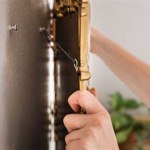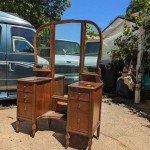Two-Way Mirror Bathrooms: Privacy Concerns and Detection Methods
Two-way mirrors, also known as one-way mirrors, present a significant privacy risk, particularly in sensitive locations like bathrooms. These mirrors, under specific lighting conditions, allow viewing from one side while appearing reflective on the other. This article explores the mechanics, potential misuse, and methods for identifying two-way mirrors in bathroom settings.
Understanding Two-Way Mirrors
A two-way mirror is a piece of glass coated with a thin metallic layer, often silver or aluminum. This coating is applied in such a way that it only partially reflects light. In a brightly lit room, the reflection dominates, making the glass appear like a regular mirror. However, if the observation room behind the mirror is dark, light can pass through from the brighter side, allowing observation.
Potential Misuse in Bathrooms
The possibility of two-way mirrors being used for surreptitious observation raises serious privacy concerns. Bathrooms represent a space of vulnerability, and the presence of a concealed observation device can be deeply unsettling and constitute a severe violation of privacy. This concern is heightened in public restrooms, hotel rooms, and changing rooms.
Detecting Two-Way Mirrors: The Fingernail Test
One commonly suggested method for detecting a two-way mirror involves placing your fingernail against the reflective surface. With a regular mirror, a gap will appear between your fingernail and its reflection due to the presence of the glass layer. However, with a two-way mirror, this gap is minimized or non-existent due to the reflective layer being on the surface.
Limitations of the Fingernail Test
While the fingernail test can be a useful initial assessment, it’s not foolproof. Certain types of two-way mirrors, particularly those with thicker glass or protective coatings, can still exhibit a small gap. Therefore, relying solely on the fingernail test is not recommended.
The Light Test: Utilizing a Flashlight
A more reliable method involves using a bright light source, such as a flashlight or the flashlight function on a smartphone. By shining the light directly onto the mirror's surface, you can observe the space behind it. If the area behind the mirror is observable, it indicates a potential two-way mirror.
Observing Ambient Light Changes
Another approach is to manipulate the lighting conditions. If possible, turn off the lights in the room where you suspect a two-way mirror is present. If the surrounding area is significantly darker, a concealed observation space might become more visible through the mirror.
Sound Check: Listening for Hollow Sounds
Tapping on the mirror's surface can also provide clues. A regular mirror, being backed by a solid wall, will produce a dull thud. In contrast, a two-way mirror, potentially concealing a hollow observation space, might produce a more hollow or reverberant sound.
Professional Inspection: Seeking Expert Assistance
For definitive confirmation, consulting a security professional or law enforcement is advisable. They possess the expertise and specialized equipment, such as electronic detectors, to ascertain the presence of a two-way mirror with certainty. This is particularly important in situations where privacy concerns are paramount.
Protective Measures and Awareness
While the methods described above can aid in detection, maintaining awareness and taking preventative measures is crucial. Being vigilant in unfamiliar environments, especially in bathrooms or changing rooms, is paramount. If anything appears suspicious, consider reporting it to the appropriate authorities.
Legal Implications and Reporting Suspicions
The use of two-way mirrors for unauthorized surveillance is illegal in most jurisdictions. If you suspect the presence of a two-way mirror used for illicit purposes, reporting it to law enforcement is essential. Documenting any evidence, such as photographs or videos, can strengthen your report and assist in investigations.
Building Design Considerations: Minimizing Risks
Architects and building designers can incorporate features that mitigate the risks associated with two-way mirrors. Using transparent glass partitions, ensuring adequate lighting, and adhering to building codes that address privacy concerns are crucial steps in creating safe and secure bathroom environments.

Acrylic Pmma 2 Way See Thru Mirror 3 0mm Thickness

A New Way To View London From Toilet

Pin On Techead

Woman S Tiktok Exposes Terrifying Bathroom Feature

Woman Discovers Two Way Mirror In Bar Bathroom The Owner Isn T Even A Little Bit Sorry About It

Two Way Mirror Found In Bar S Bathroom Stall

How To Detect A Two Way Hotel Mirror Tips Ensure Your Privacy

Two Way Mirror Covering Tv

A New Way To View London From Toilet

Bar Owner Defends Two Way Mirror In Women S Restroom After Comedian Exposes It Cbc News








